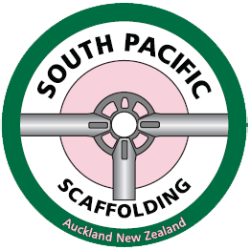When Do you Need Scaffolding?
When planning a construction project, a risk assessment and analysis will dictate whether scaffolding is required. This risk assessment analysis is required by law before construction commences at heights, and while it is not required for work being done privately, common sense dictates that safety should be taken seriously. For instance, while a single storey roof repair can be performed using alternative means such as a ladder, it is by far safer for everyone involved if you utilise a platform or scaffolding.
Why Do I Need Scaffolding? Is Scaffolding Necessary?
There are multiple reasons that make scaffolding important, even in the instances where the law does not require you to have it. When working at heights for an extended period of time, especially with New Zealand’s erratic weather conditions, workers are at risk of falling. Scaffolding provides a framework for stable platforms to reduce risks and hazards to acceptable levels. It also makes it easier to move around a structure, making work faster and more efficient. In addition to this, it makes it easier to tether tools to further reduce risk on the work site, preventing them from falling and causing an accident.
Regulations for Erecting Scaffolding in New Zealand.
Before erecting scaffolding, a site manager needs to ensure that the scaffolding is sufficient for the job and its intended purpose. Additional processes include an information tag being fitted to the scaffold that is completed and updated weekly for basic scaffolding and daily for suspended scaffolds. The scaffold needs to have a suitable foundation. This includes a sound supporting structure, a steel base plate, and in some cases a timber sole-board oro bearer.
Having appropriate access to the scaffolding platforms by way of secure ladders, stairs or access needs to be provided directly from the adjacent structure. These scaffolding platforms need to be decked the full width of the scaffold structure, while being no further than 300mm from the work face. If this is not possible, inside planks or internal guardrails and toe boards need to be fitted. It is also required that all scaffold platforms have full edge protections, such as guardrails (between 900mm and 1100mm min/max), mid rails and toe boards.
When Do You Need Outriggers on Scaffolding?
This judgement call is taken out of your hands as soon as you are working on scaffolding above 5m in height. In New Zealand, the law requires that any work performed above this height requires an appropriate class of Certificate of Competence. These are issued by SARNZ (Scaffolding Access and Rigging Association of New Zealand) and are valid for four years. This applies to scaffolding over 5 meters, as well as all suspended and special scaffolds. Workers with these certifications are the only people who can work on these scaffolding structures.
South Pacific Scaffolding are Auckland’s Scaffolding Specialists
South Pacific Scaffolding are a highly experienced team of scaffolding professionals. We are well versed in all the rules and regulations to set your project up with the safest, most efficient scaffolding solution. No matter the size or complexity, South Pacific Scaffolding has a reputation for getting it done with a stellar reputation for safety. If you have a project that requires scaffolding, get in contact with the team at South Pacific Scaffolding today.

